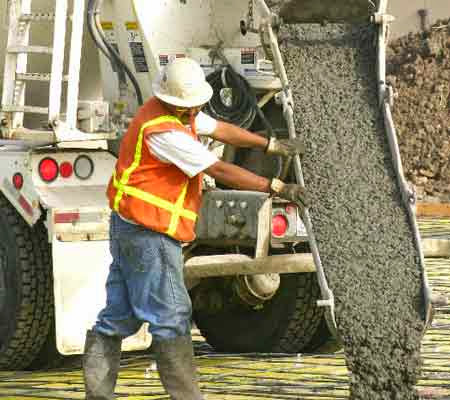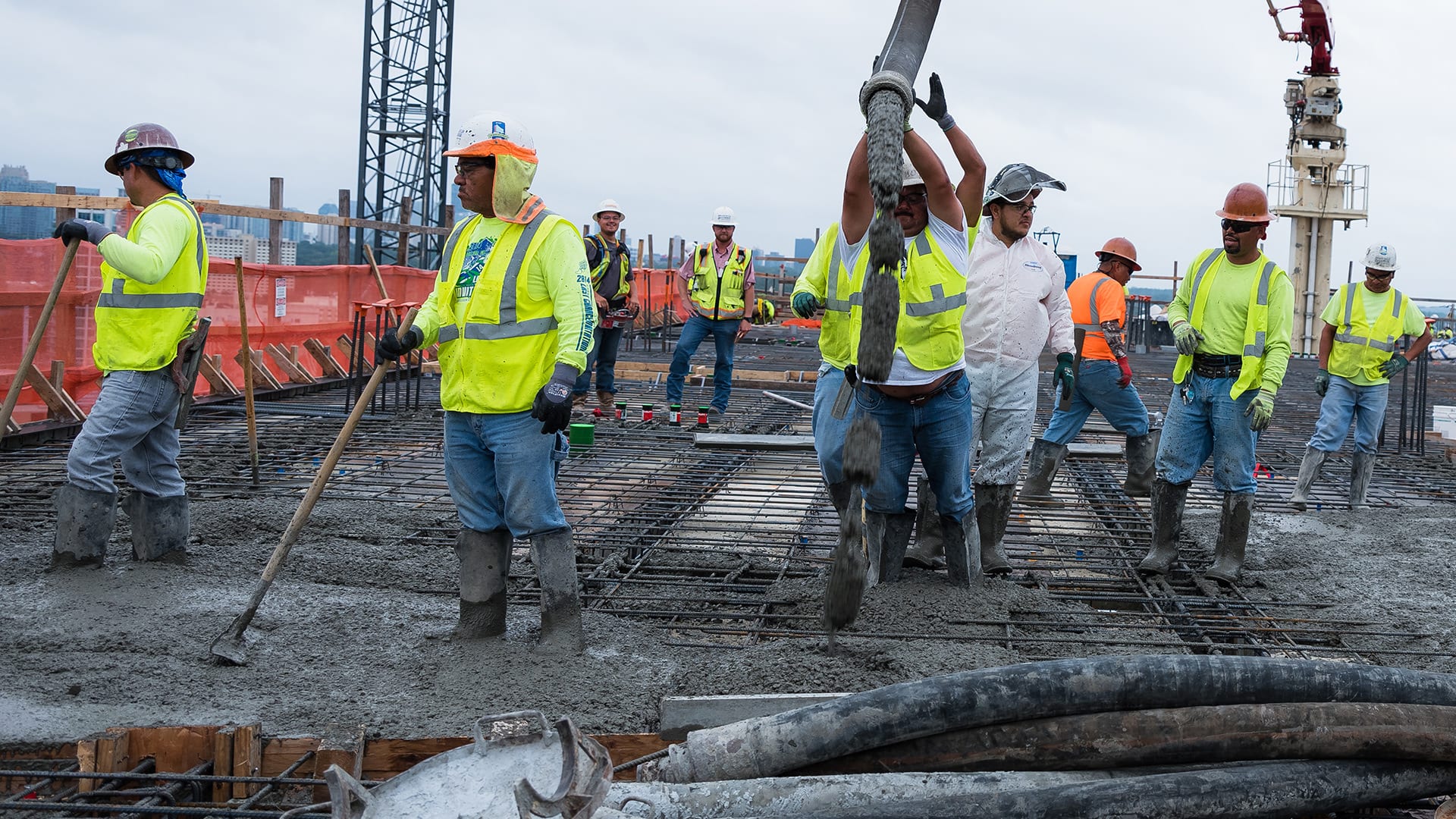7 Proven Strategies to Maximize Project Value with West Coast General Engineering Concrete
Wiki Article
The Important Duty of Concrete Foundation in Structural Honesty and Durability
When it concerns building a building, the structure is a lot more essential than you could assume. Concrete structures supply unparalleled strength and toughness, guaranteeing your structure can stand up to numerous environmental obstacles. Without a strong base, you risk potential problems like moving or breaking, which can endanger safety and worth. Understanding the subtleties of concrete foundations could be the secret to protecting your investment for several years to find. What should you think about following?Recognizing the Relevance of Concrete Foundations
Concrete structures are vital to the overall security of any structure, as they provide the necessary assistance needed to withstand various tons and ecological problems. When you think of constructing a home or a commercial space, the foundation is the first thing you ought to think about. It works as an obstacle versus dampness, safeguarding your property from water damage. A well-placed concrete foundation also protects against settling and shifting, which can cause splits in walls and floorings. You'll intend to guarantee that the structure is effectively designed and reinforced, as this affects the durability of your structure. In addition, a solid foundation can enhance power effectiveness by decreasing air leakages. Remember, neglecting the significance of a concrete structure can result in pricey repairs down the line. So, purchasing a quality structure upfront is crucial for the honesty and resilience of your framework.
Benefits of Concrete Foundations for Architectural Honesty
While several variables add to a building's architectural honesty, concrete foundations offer unequaled resilience and strength. You'll value that concrete can withstand extreme weather, standing up to both moisture and temperature level changes. This resilience suggests your structure is much less likely to experience cracking or shifting over time, which can endanger its safety.Additionally, concrete's inherent weight offers a solid base, stopping movement throughout all-natural occasions like quakes or floodings. When you select a concrete foundation, you're likewise going with low maintenance; unlike timber, it won't rot or attract bugs, conserving you time and money in repairs.Moreover, concrete's fire resistance supplies included safety, ensuring your structure can withstand high temperature levels without significant damage. Generally, purchasing a concrete foundation means you're prioritizing the long-lasting stability and integrity of your building, making it a sensible choice for any type of building task.Common Types of Concrete Foundations
When it pertains to constructing structures, comprehending the usual kinds of concrete structures can help you make informed choices for your project. One of the most common kinds include slab-on-grade, crawl room, and full basement foundations.A slab-on-grade foundation is an easy, cost-efficient choice, where a thick concrete slab is poured straight on the ground. This type works well in cozy climates, as it lessens heat loss.Crawl room foundations elevate the home a little above ground, enabling for air flow and access to pipes and electrical systems. This style can aid avoid moisture issues.Full cellar structures supply extra living or storage room while supplying outstanding structural assistance. They call for even more excavation and are commonly made use of in chillier climates to stop frost heave.Variables to Think About When Designing a Concrete Structure

Finest Practices for Setting Up Concrete Foundations
When you're setting up a concrete foundation, proper site preparation is necessary to guarantee stability (West Coast General Engineering Concrete). You'll likewise require to understand support strategies to boost stamina and sturdiness. Do not overlook the healing process, as it plays a basic role in accomplishing a solid structure.Site Preparation Value
It might seem uncomplicated, correct website prep work is essential for assuring a strong and sturdy concrete structure. Beginning by clearing the area of any type of debris, greenery, or organic material that can endanger the structure's stability. Next, evaluate the soil type and compaction; you might need to excavate or add materials to create a stable base. Level the ground to ensure even weight circulation and avoid resolving concerns in the future. Mounting correct drainage systems is also necessary to stop water accumulation, which can deteriorate the structure with time. Mark out the structure's measurements properly to assist the pouring procedure. By following these actions, you'll establish the phase for a successful concrete structure that stands the test of time.
Support Techniques Explained
When the website is correctly prepared, the next action in ensuring a tough concrete structure entails carrying out efficient support strategies. You should start by using steel rebar, which offers tensile stamina and aids prevent splitting. Lay the rebar in a grid pattern, ensuring it's raised making use of spacers to maintain proper coverage. In addition, take into consideration using cable mesh for extra support, especially in areas subject to heavy loads. Don't neglect to connect the rebar junctions firmly with wire. For bigger foundations, fiber support can enhance toughness, lowering the danger of shrinkage splits. Always adhere to local building ordinance and guidelines to make sure conformity. By applying these reinforcement methods, you'll significantly enhance your structure's toughness and longevity, laying a solid foundation for your framework.Healing Process Fundamentals
To assure your concrete structure cures properly, it is necessary to keep adequate moisture and temperature conditions quickly after putting. Start by covering the surface with a wet cloth or plastic bed linen to retain moisture. This keeps the concrete moisturized, avoiding splits and making certain toughness. You must also check the temperature; perfect treating conditions are between 50 ° F and 90 ° F. If it's as well hot, mist the surface on a regular basis to stop quick dissipation. For chilly weather, think about utilizing insulating blankets to keep heat. Goal for a healing period of at the very least 7 days, as this is essential for optimum stamina advancement. By following these best techniques, you'll boost your foundation's sturdiness and longevity, guaranteeing architectural stability for years to come.Upkeep of Concrete Structures for Durability
To keep your concrete foundation strong and long-term, regular assessments are necessary. You ought to also guarantee reliable drainage services are in area to avoid water damage. If you identify any cracks, resolving them immediately will save you from bigger issues down the line.
Normal Evaluations and Assessments
While regular inspections and assessments might look like a task, they're necessary for preserving the integrity of your concrete foundation. By regularly inspecting for fractures, changes, or indications of wear, you can catch potential concerns before they intensify into costly repairs. Search for any water pooling around the foundation or unusual settling, as these can indicate underlying problems. It's also smart to monitor any adjustments in your house's structure, like doors that stick or windows that don't open efficiently. Keeping a record of your assessments helps track modifications gradually, enabling for proactive upkeep. Inevitably, these evaluations ensure your foundation stays stable, sustaining the durability and safety of your whole framework. Don't ignore this vital aspect of homeownership!Reliable Drainage Solutions
Regular inspections can expose concerns like water drainage issues that may compromise your concrete structure's stability. To stop water build-up, guarantee your gutters and downspouts straight water away from the structure. Installing French drains can properly reroute surface area and groundwater, decreasing stress on your foundation walls. Furthermore, grading the dirt around your home helps assure that water flows away, as opposed to pooling near your foundation.Consider making use of sump pumps in areas vulnerable to flooding, as they actively remove excess water. Frequently look for clogs in drain systems and clear them promptly. You'll secure your structure's integrity and durability by taking West Coast General Engineering industrial concrete Rancho Cucamonga these positive procedures. Keep in mind, efficient drain remedies are crucial for keeping a solid, sturdy concrete structure.Trigger Crack Repair Works
When you notice cracks in your concrete foundation, addressing them immediately is essential for maintaining its longevity. Tiny cracks can rapidly evolve into larger concerns, endangering the structural integrity of your home. On a regular basis inspect your foundation for indicators of damage, such as horizontal or upright cracks. If you find any type of, don't wait-- repair them quickly. You can use epoxy shots or concrete patching substances, which work for securing splits. Constantly follow the manufacturer's instructions and consider consulting a professional for substantial damages. Bear in mind, timely fixings not just improve your structure's resilience but also save you cash over time by protecting against a lot more considerable repair services down the line. Remain positive, and your foundation will remain solid and protected.Dealing With Common Issues With Concrete Structures
Concrete structures can deal with various issues with time, making it essential to identify and address them without delay. Among one of the most usual troubles is splitting, which can happen because of temperature variations or resolving soil. If you discover cracks, it's necessary to analyze their size and deepness; tiny fractures can often be secured, while larger ones might need specialist evaluation.Water invasion is another significant issue. Excess moisture can cause mold development and architectural wear and tear. Warranty appropriate drainage around your structure to minimize this threat. Furthermore, look for indications of shifting or bowing walls, as this can show underlying problems with your structure's stability.Regular assessments are basic to capture these issues early. If you detect any worrying indications, do not be reluctant to consult a structure specialist. By staying positive, you can maintain the stability and durability of your concrete structure, ensuring your home continues to be safe and safe and secure.Frequently Asked Inquiries
Exactly How Does Dirt Type Affect Concrete Structure Performance?
Dirt type significantly influences concrete structure performance. If you have actually got expansive clay, for example, it can create shifting and splitting. Sandy dirt may result in clearing up. Recognizing your dirt helps ensure a secure structure.Can Concrete Foundations Be Repaired if Harmed?
Yes, you can repair broken concrete structures. Relying on the extent of the damage, techniques like epoxy injection or slab jacking can bring back security. It's finest to seek advice from a professional for reliable services.What Is the Common Life-span of a Concrete Structure?
A concrete structure generally lasts 30 to 100 years, depending upon aspects like soil problems, environment, and maintenance. You'll desire to watch on it to ensure it remains in excellent shape throughout its lifespan.Exist Alternative Products to Concrete for Foundations?
Yes, there are choices to concrete for foundations, like steel, hardwood, or perhaps recycled products. Each alternative has one-of-a-kind advantages and drawbacks, so you should consider your project's certain demands when picking the ideal product.Just How Does Environment Impact Concrete Foundation Resilience?
Climate greatly influences concrete foundation longevity (West Coast General Engineering concrete foundation). Severe temperature levels, moisture, and freeze-thaw cycles can weaken the product, resulting in cracks and architectural issues. You need to think about local environment conditions when preparing your foundation to ensure long-term efficiencyReport this wiki page